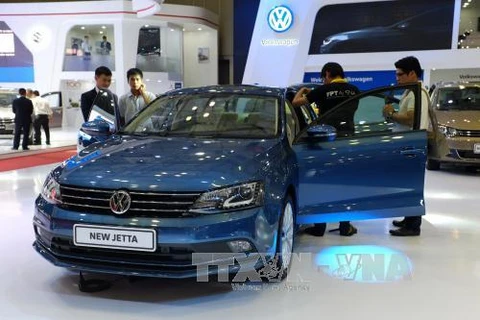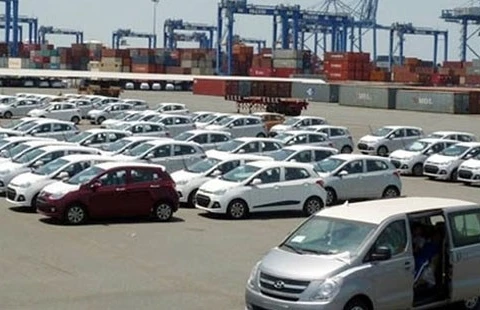Hanoi (VNA) - Vietnam imported nearly 4,800 Indian cars in the first quarter of this year, increasing more than threefold compared with the same period last year, according to the Vietnam Customs.
The average costs, insurance and freight (CIF) price were reported at nearly 3,800 USD each, which does not include taxes and fees, the report said.
This price is seen as very cheap as the average prices from other countries such as Thailand, Indonesia and the Republic Korea is about 17,000 - 18,000 USD each.
Bui Xuan Truong, a leader of Anycar Vietnam Company, said many Vietnamese customers like Indian cars because of their eye-catching designs, diversification of models, and prices which are much cheaper than other cars in the same segment.
“Almost all customers, who have between 300 million VND and 400 million VND, will choose Indian cars, in addition to the customer psychology of using imported cars,” Truong said to plo.vn, an online news web of the HCM City’s Judicial Department.
Sharing the opinion about the reason for the popularity of cheap Indian cars, auto expert Pham Xuan Mai said the automakers cut down a number of parts and components.
“For example, a small sedan imported from India has fewer air bags and several other components, leading to the fact that its convenience and safeness are not as high as others from ASEAN countries,” said Mai.
Cars imported from India, especially those in the small-size segment, are equipped with rudimentary safety facilities. Almost all have only one air bag for the driver, while cars imported from other countries have more air bags or are equipped with the safe electronic brake systems.
Nguyen Nghia, a resident in HCM City’s Thu Duc district owning an Indian car, said the weak points of Indian car are low safety, uncomfortable seats and weak soundproofing.
“In particularly, the tyre is so small that it does not grip the road well and its fuel savings are bad. However, one needs more time to make an accurate evaluation of the quality,” Nghia said.
Insiders predicted that after a period of attracting Vietnamese customers with cheap prices, Indian cars will slowly lose their market share because they will not be able to compete with imported cars from other countries on the quality aspect. With their current quality, Indian cars will likely go the way of Chinese automobiles whose popularity waned a short while after entering the Vietnamese market.
Tata Nano is an example. The car is priced at about 2,500 USD in India. If it is exported to Vietnam, its price will increase after taxes and fees to roughly 100 million VND. However, the car has only one rear view mirror, no air conditioner and uncomfortable seats.
With cars such as Tata Nano which are made in India, Mai said its fate could be similar to that of Chinese cars because of their low safety. As for other global trademarks, which were manufactured and assembled in India such as Suzuki, Hyundai and Honda, they could still perform well in the Vietnamese market.
Truong said Vietnamese customers still prefer to use modern, good quality and comfortable cars which are high on the safety quotient.
“Furthermore, the prices of a number of cars imported from ASEAN will go down as of 2018 when the import tax becomes zero percent. This will put pressure on cheap Indian cars. If Indian automakers do not improve the quality to meet the Vietnamese customers’ demand, there will be no market share for them in Vietnam,” Truong said.
Pham Nguyen, a representative of an automobile import company, told plo.vn that the complete built-up units imported from India were “suspiciously cheap”.
He said Indian cars are suffering from an import tax of 70 percent of the car value, more than double that of cars imported from ASEAN countries, but its import price is nearly half of those from ASEAN.
The local auto importers also reported that a number of Indian cars in Vietnam, which were tested for safety under the European New Car Assessment Programme, had worrying results with regard to air bags and anti-skid braking systems.
.
They said Vietnam needs to issue standards or apply EU auto quality standards to control and prevent the import of low-quality cars to the country.-VNA
VNA

























